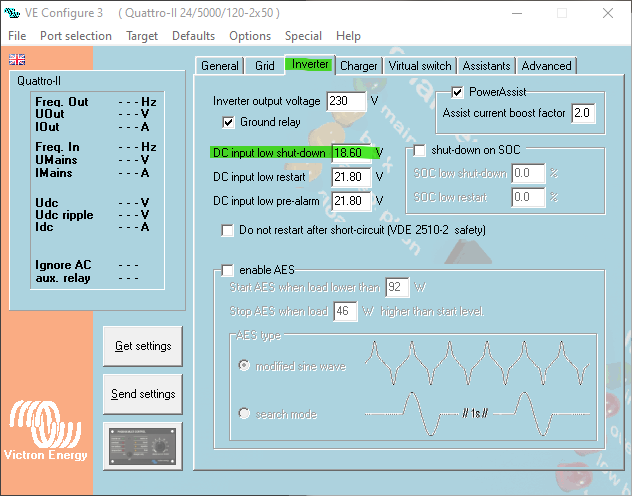I have (3) 24V 230Ah batteries connected in paraell. I need to be able to charge them to 100% every night. Some days I may use up to 90% of the batteries.
I thought I had my shunt programmed correctly to the batteries SOC, but I must have been wrong. The batteries were dead with the shunt showing 61% left. The batteries were at 21.6V so defiantly dead. I am assuming they never charged to 100% to begin with.
I plugged them in and let them charge overnight, the next morning the 5k quattro was slowly putting barely any current into them so I assumed they were full. I then told the shunt hey this is 100% for 690Ah. With them dying at 60% left on the shunt I'm assuming they weren't actually 100% and the inverter was just going to slowly charge them the rest of the way. With the rate they were charging that would take like 24hrs for a full charge at minimum.
I'm using this set up for a mobile dog grooming van, so I'm going to be pulling some big power and 40% isnt going to be enough for a full day. Plus I paid for the whole battery I want to use it all lol.
Is there a way I can change the settings on the inverter to safely charge the batteries at a higher current to 100% so they can charge overnight in around a 12hr time? They wont always get drained super low, mostly in the summer when the AC is also running all day. Otherwise ill use 30-50% a day depending how busy and how many big dogs or dogs with a lot of hair to dry.
I've looked every where and I can't find any concrete answers. I don't want to damage the system or batteries, but I really need these to charge faster everyday.

